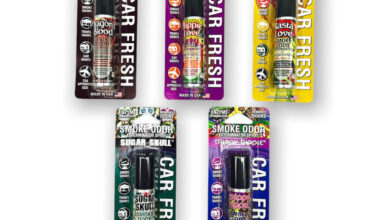Keeping Dry and Safe: Understanding Structural Waterproofing and Types of Damp Proofing

Keeping our homes dry and safe is super important. Think about it like this: just like you wear a raincoat to stay dry, buildings need protection from water too. This is where structural waterproofing and damp proofing come into play. These methods make sure that water doesn’t sneak into places it shouldn’t be, like our basements or walls. In this article, we’re going to explore different ways to shield our homes from water. We’ll look at what materials can be used, why they’re helpful, and how they keep our homes cozy and dry. By understanding these techniques, you can see how essential they are to maintaining a strong and healthy home. So, let’s dive in and learn all about keeping our homes protected from water!
What is Structural Waterproofing?
Structural waterproofing is like giving your house a big umbrella that helps keep the lower parts, like basements, from getting wet. It’s super important because without it, water can sneak into the foundation of a house. This can cause lots of problems, like making the building weak and even ruining things stored in basements.
When we talk about waterproofing, we mean creating a barrier that blocks water from entering places in a building where it could do damage. Imagine a shield that keeps the enemy, which in this case is water, out of the fortress. This shield is put in the bottom levels of buildings, especially those parts that are below the ground.
For example, if you have a basement where you love to play or hang out, waterproofing ensures that it stays dry and pleasant, without any dampness or puddles. It’s also used in places like parking lots under buildings or big storage spaces that are underground. By keeping these areas dry, waterproofing helps keep the entire building strong and safe for everyone. So, knowing about waterproofing helps us understand how it keeps our homes sturdy and comfortable.
Types of Waterproofing Materials
In our quest to keep water out of our homes, we use various waterproofing materials. Each material acts like a superhero, with special powers to block water. Let’s explore some of these materials!
First up, we have membranes. Think of these as big, flexible sheets that cover surfaces to stop water from passing through. They are like raincoats for buildings! Next, we have coatings. These are liquid solutions that dry up to form a hard, water-resistant layer. It’s similar to painting a wall, but instead of color, we’re applying a shield against water.
Lastly, we use sealants. These are sticky substances that fill gaps and cracks to keep water out, kind of like how you might use glue to fix a broken toy. Each of these materials is chosen based on how much water they need to block and where they need to be applied. Choosing the right one can really make a difference in keeping a building dry and safe.
Understanding Damp Proofing
Damp proofing is another clever way to keep our homes dry. Unlike waterproofing that covers more extreme wet conditions, damp proofing handles less intense moisture. Think of it as a lightweight jacket compared to a heavy raincoat.
Damp proofing is super important because it stops moisture from getting inside the walls and floors of your house. This moisture can make your home feel musty and even lead to mold, which isn’t good for our health.
Typically, damp proofing is used around the lower parts of walls and in basements where water might try to sneak in from the ground. It involves putting a barrier, like a special coating or a layer, that moisture can’t pass through. This keeps the inside of your home nice and dry, making it a healthier place to live. So, understanding and using damp proofing helps protect your home from unwanted dampness and keeps everything inside feeling fresh and comfortable.
Types of Damp Proofing Techniques
When we need to keep dampness out of our homes, there are several types of dapmproofing techniques we can use. One popular method is using damp proof courses (DPCs). These are barriers, usually a thick plastic or a special type of mortar, laid across the base of walls to block moisture from rising up from the ground. Imagine it as a stop sign that tells water it can’t go any further!
Another technique involves damp proof membranes (DPMs), which are like big plastic sheets placed under floors or in walls to prevent moisture from getting through. It’s similar to putting a liner in a swimming pool to keep the water inside.
We also have more advanced methods like injecting chemicals into walls that create a waterproof barrier. This is like giving the wall a vaccine against dampness. Each method has its own best use, depending on how old the building is and what the moisture problems are. By knowing these techniques, we can pick the best way to keep our homes dry and healthy.
How to Choose the Right Protection for Your Home
Choosing the right protection against water and dampness means looking at your home and figuring out where the problems are. It’s a good idea to walk around your house and check places like the basement, ground floors, and near the ground outside, to see if you notice any dampness or water damage.
If you’re not sure what to look for, it’s a smart move to ask a professional. These experts can come and take a look, telling you exactly where the problems are and the best way to fix them. They can help you choose between waterproofing and damp proofing, and decide which materials and methods are best for your house.
It’s also important to keep checking your home every now and then, especially after heavy rains, to make sure everything is still holding up well. This helps catch any new problems before they get big, keeping your home safe and dry.
Conclusion
Keeping our homes dry and safe from water and dampness is really important. It not only makes our homes more comfortable but also helps them last longer. Remember, if you’re not sure how to protect your home, talking to a professional can really help. They know all about how to keep homes dry and can guide you in making the best choices for your house. Let’s keep our homes happy and dry!





